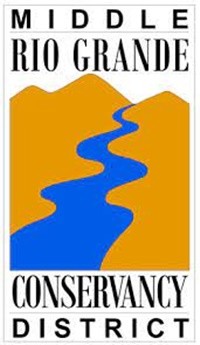
Middle Rio Grande water users have been given notice to anticipate changes to water availability and delivery schedules in mid-August.
High temperatures and lack of rainfall have hindered the natural flow of the Rio Grande, which is critical to the delivery of irrigation water within the MRGCD and the riverine ecosystem. In response to higher-than-normal irrigation demand and lower-than-expected natural river flow, MRGCD began releasing water from the San Juan-Chama Project on July 17.
This release from upstream storage was needed earlier and at higher rates than anticipated. Approximately 40 percent of the current irrigation water supply is from SJCP storage releases, and the rest is from natural river flow, but MRGCD’s SJCP water is projected to run out before August 23.
Once all the SJCP water is released, MRGCD will rely solely on the natural river flow to continue making irrigation deliveries through fall. In addition to extreme drought conditions over the past four years, other factors impacting upstream storage and the Rio Grande flow include rehabilitation work on El Vado Dam and New Mexico’s Rio Grande Compact debit.
“The lack of rainfall is difficult on its own, coupled with the challenges of not being able to store water for summer releases, is disheartening, but we are doing our best to work with water users in the middle Rio Grande Valley to deliver what is available,” said Jason Casuga, MRGCD Chief Executive Officer.
In addition to communicating with farmers and irrigators, MRGCD and Reclamation are working together to mitigate the effects on endangered silvery minnow in the area.
“Reclamation and our partners continue to coordinate closely to manage every drop of water for multiple purposes. In the last two decades, Reclamation has leased just under 500,000 acre-feet of water to supplement flows through the Middle Rio Grande for endangered and threatened species, which, at times, also increased inflow to Elephant Butte Reservoir,” said Reclamation’s Albuquerque Area Manager Jennifer Faler. “We remain committed to supporting agricultural and municipal uses while meeting Endangered Species Act requirements to support the Middle Rio Grande ecosystem. We continue to lease available water, but through this multi-decadal drought, our options are becoming increasingly more limited.”
Reclamation will release water to supplement Rio Grande flows in cooperation with the MRGCD and the U.S. Fish and Wildlife Service to target specific areas of the river with known silvery minnow habitat and to manage the rate of anticipated river drying. The Service will be coordinating minnow rescue efforts as drying occurs.


















